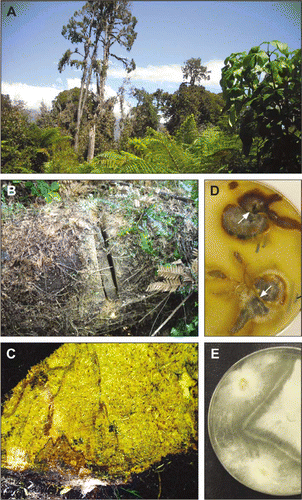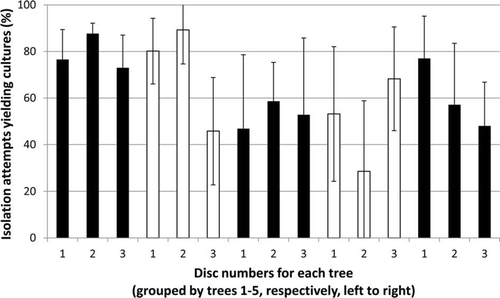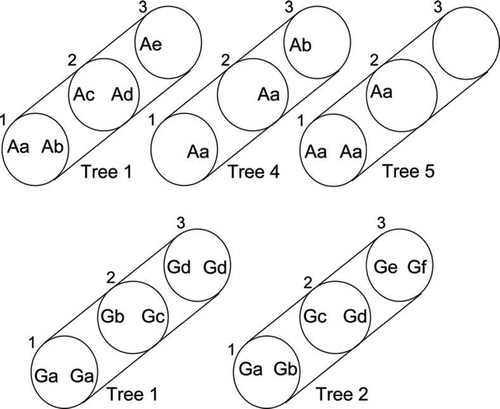Figures & data
Figure 1 Basidiomycete decay study in a South Island west coast dense lowland rimu forest. A, Study site 1.5 km southwest of Hannah's Clearing 10 years after the destructive storm. B, Fallen rimu study tree with a partially cut sample disc quadrant. C, Portion of extracted sample quadrant showing characteristic decay texture of Ganoderma cf. applanatum over most of the face (stem exterior is at bottom of image); brown zone lines (transected pseudosclerotial plates) delineate boundaries of separate vegetative compatibility groups (vcgs, treated as discrete mycelia) within the decayed wood. D, E, Cultures of basidiomycete decay fungi isolated from study trees paired on 2% malt agar in order to distinguish vcgs (plates are 9 cm in diameter). D, Armillaria novae-zelandiae: an incompatibility separation zone accompanied by a brown line (arrowed) indicates that the isolates in each of these two pairings belong to separate groups (those belonging to a common group merged evenly without a barrier line). E, Ganoderma cf. applanatum: the dense barrier line denotes two groups (individual mycelia) among these three mutually paired cultures.

Table 1 Means1 of percentage isolation attempts from each sector yielding fungi, by radial depth zone (with 95% confidence limits).
Figure 2 Yields of decay fungi (confirmed basidiomycetes plus additional laccase positive) by disc and tree. Means of six sample units (2 sector blocks×3 depth classes) per disc (error bars: 95% confidence limits).

Figure 3 Diagrammatic representation of selected trees showing distribution of vegetative compatibility groups (vcgs) of Armillaria novae-zelandiae (top row) and Ganoderma cf. applanatum (bottom row) within sector blocks (left and right) from sample discs (numbered 1–3 up stem). Letter symbols denote the vcg of one isolate tested per sector. Within each tree, vcgs coded by different letters are incompatible, as indicated by cultural pairing. Spaces indicate sectors in which A. novae-zelandiae was not present or from which axenic cultures were not obtained.
